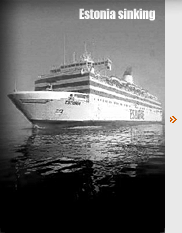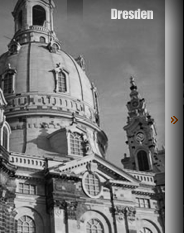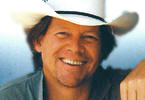
|

|

|

|

|
 9-11 Archive 2004
9-11 Archive 2004 Controlled Press Ignores Questions about 9-11
Controlled Press Ignores Questions about 9-11

Controlled Press Ignores Questions about 9-11September 17, 2004 SOMERSET COUNTY, Pennsylvania - Three years after the events of 9-11, half of the residents of New York City believe U.S. leaders had foreknowledge and "consciously failed" to act to prevent the disasters, while two in three want a new investigation of the "still unanswered questions." In the first survey of public opinion about allegations of U.S. government complicity and covering-up of the events of 9-11, a Zogby International poll found that fewer than two in five New Yorkers believe the official 9-11 Commission "answered all of the important questions about what actually happened on September 11th." One in two New York City residents say that senior government officials "knew in advance that attacks were planned on or around September 11, 2001, and that they consciously failed to act," according to the poll of August 24-26, 2004. More than 66 percent called for a new investigation, by Congress or Elliot Spitzer, New York's Attorney General, to resolve the "still unanswered questions." "I think these numbers show that most New Yorkers are now fed up with the silence, and that politicians trying to exploit 9-11 do so at their peril," W. David Kubiak, executive director of 911truth.org, one of the groups that commissioned the poll said. "The 9-11 case is not closed and New York's questions are not going away." The New York Times, on the other hand, told puzzled readers in its lead editorial on September 11, 2004 that it's possible to know what happened on 9-11 "without knowing what happened." "In the three years since 9-11, we've begun to understand that it's possible to know what happened without knowing what happened," the editorial began. "Some of what we need to know publicly has been provided by the report of the 9-11 commission. Other answers are lacking." 9-11 being "a central event in this nation's history," the editorial concluded: "It's important that we who live most immediately in its shadow press hard to learn everything that can be learned about that day and to make sure that nothing is allowed to fade into the world of the publicly unknowable." The New York Times efforts, however, did not include sending a reporter to either of the two recent 9-11 conferences addressing the unanswered questions held on Broadway in downtown Manhattan. The first event, "The 9-11 Citizen's Commission: The Omissions Hearings," was held Sept. 9 at Symphony Space on Broadway. The six-hour conference was chaired by former Rep. Cynthia McKinney (D-Ga.) and brought together panels of experts who presented new evidence and raised questions about the official version of events. The second event, "Confronting the Evidence: 9-11 and The Search for Truth," was held at the Manhattan Center Ballroom during the evening of Sept. 11. Having participated in both conferences, I asked the New York Times, which says it should "press hard to learn everything that can be learned about that day," if they had covered the 9-11 conferences. The paper confirmed they had not covered either event. While the Times carried 9-11 stories during the days leading up to the third anniversary, their reporting failed to ask critical questions. For example, in a Sept. 10 article entitled "Falling Bodies" the fate of more than 1,000 people trapped in the twin towers above the levels impacted by the planes is discussed without mentioning the possibility of rescue by helicopter - or the fact that the doors to the roof had been locked. A CITIZEN'S EFFORTS Both Manhattan events were sponsored by a well-heeled citizen named Jimmy Walter, who has dedicated one-tenth of his net worth to bring attention to the yet unanswered questions of 9-11. Walter told me he is spending $250,000 to bring public attention to the official cover-up of 9-11. Walter said that he had only realized that something was seriously wrong with the government's version of events after having seeing Painful Questions, a book and video about 9-11, which was like "an epiphany," he said. Before that "epiphany," Walter said he had believed that 9-11 had been "a sin of omission; not commission." "I know that explosives had been used," Walter said about the destruction of the twin towers. Told that the Anti-Defamation League of B'nai B'rith had attacked this writer for an article about eyewitness evidence of explosions in the towers immediately after 9-11, Walter said: "Mossad is in it up to their necks." Walter, 57, described himself as a "Bush clone." The son of a millionaire, Walter graduated cum laude from a prestigious prep school and the University of North Carolina. Like Bush, Walter said he served in the Air National Guard in Florida and found the regulation that allowed him to skip out the last two years. After bouts of cocaine and alcohol abuse, Walter said he "found the truth." "I want to do something significant," Walter said. And bringing public attention to the unanswered questions about 9-11 is the best way to do that, he said. Walter recently purchased full-page ads in Reader's Digest, Business Week, INC., and New Yorker. When 9-11 "activist" and conference "advisor" Nicolas Levis tried to steer the second conference away from discussion of the evidence, security guards removed a hysterical Levis from the theatre. I was then asked to join the second panel, which discussed the physical evidence, with author Webster G. Tarpley and engineer Jeff King. Both Tarpley and King agree that the towers were demolished in a crime that employed both conventional and exotic technologies. I then traveled to Somerset County to look into some of the questions surrounding United Airlines Flight 93, which allegedly turned over and crashed in a refilled strip mine between Lambertsville and Shanksville, taking 44 lives with it. Many local residents believe that the plane was shot down, which they say would explain why parts of the plane and its contents were found strewn over a large area. One question is what happened to the physical wreckage of the plane? "There was no plane," Ernie Stull, mayor of Shanksville, told German television at the official "crash" site in March 2003: "Yes. My sister and a good friend of mine were the first ones here," Stull said. "They were standing on a street corner in Shanksville talking. Their car was nearby, so they were the first here - and the fire department came. Everyone was puzzled, because the call had been that a plane had crashed. But there was no plane." "They had been sent here because of a crash but there was no plane?" the reporter asked. "No. Nothing. Only this hole," Stull said pointing to a smoldering hole shaped like the corner of a square. When I spoke with Mayor Stull, he explained that he had personally visited the crash site, "a day or two later." Nena Lensbouer, who had prepared lunch for the workers at the scrap yard overlooking the crash site was one of the first people to see the smoking crater. I spoke with Lensbouer at her home. She told me that the hole was only 5-6 feet deep and smaller than the 24-foot trailer in her front yard. She described hearing "an explosion like an atomic bomb" - not a crash. Lensbouer called 911 and stayed on the line as she ran across the reclaimed land of the former strip mine to within 15 feet of the smoking crater. Lensbouer told me she did not see any evidence of a plane then or at any time during the duration of the excavation at the site, an effort that reportedly recovered 95 percent of the plane and 10 percent of the human remains. While specific details vary, the explanation for the disappearance of the plane is that the reclaimed land acted like a liquid and absorbed the aircraft, which is said to have impacted at between 450 and 600 mph. This explanation is also used to explain why there was only a brief explosion with one short-lived smoke cloud, not unlike a bomb blast. "I never saw that smoke," Paula Long, an eyewitness, told me. Long ran "immediately" after hearing the crash but did not see the cloud of smoke caught in the now famous photograph by Valencia McClatchey. "It liquefied," Bob Leverknight, an active member of the Air National Guard and correspondent with Somerset's Daily American, told me about how the wreck and much of the fuel disappeared. One of the massive engines, Leverknight said, however, "bounced off the ground" and was found in the woods. It has been reported that a wing and engine were found more than one mile from the crash site. Jim Svonavec, whose company worked at the site and provided excavation equipment, told me that the recovery of the engine "at least 1,800 feet into the woods," was done solely by FBI agents using his equipment.
|
©2010 Christopher Bollyn | Sitemap | [email protected]

